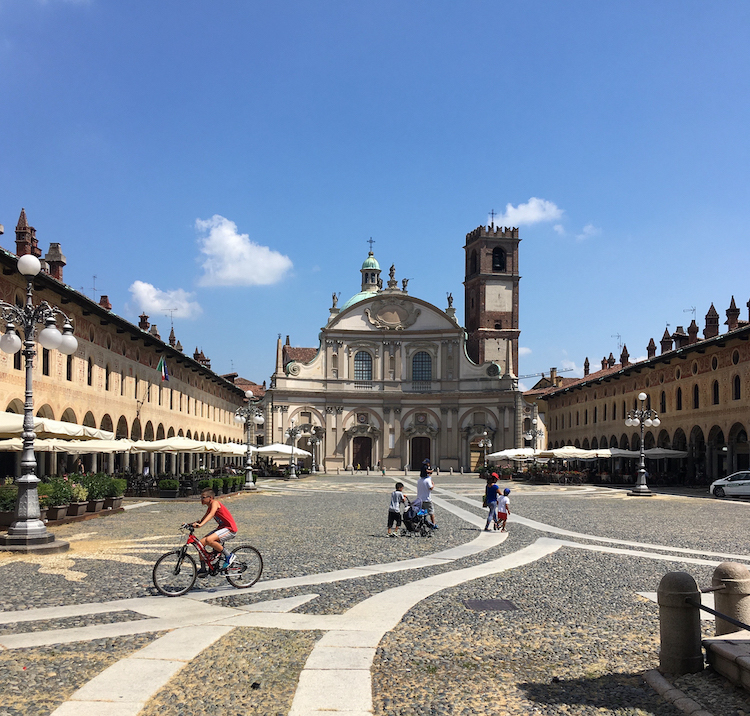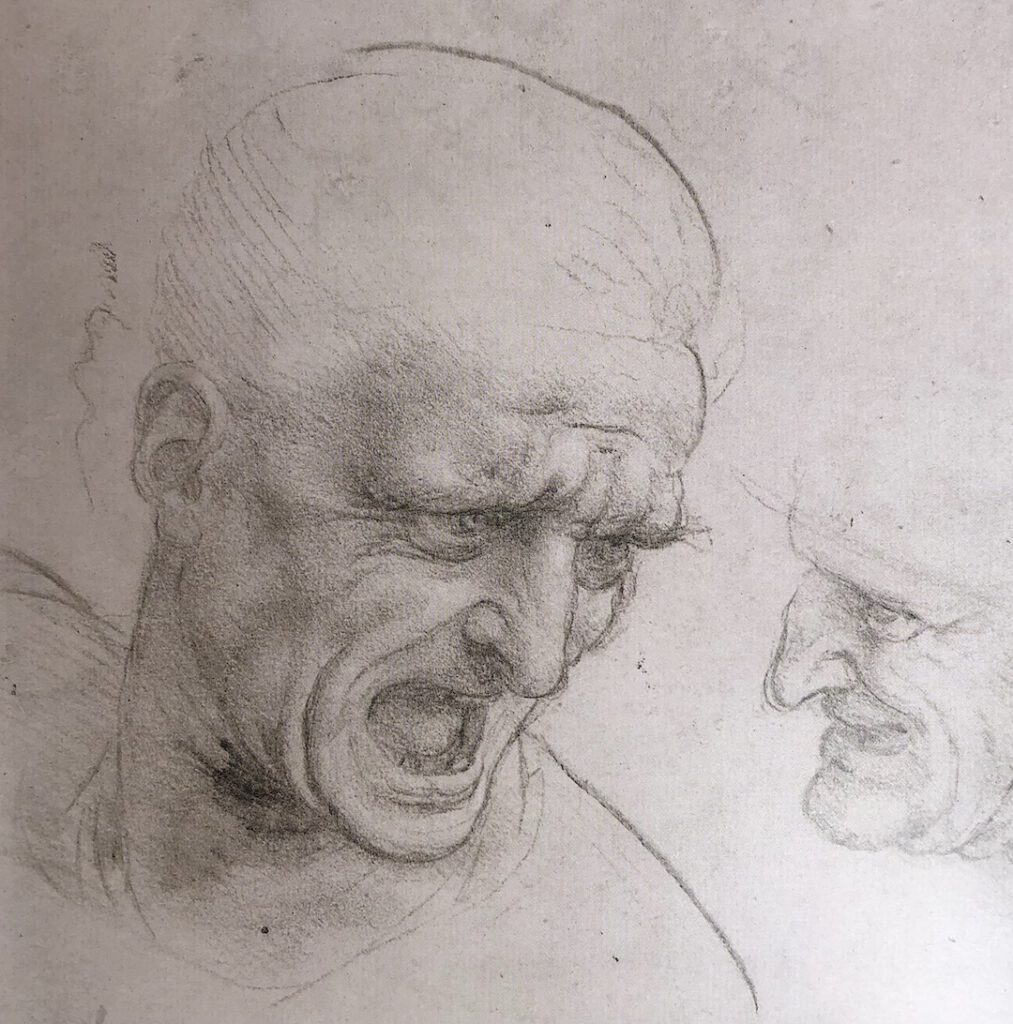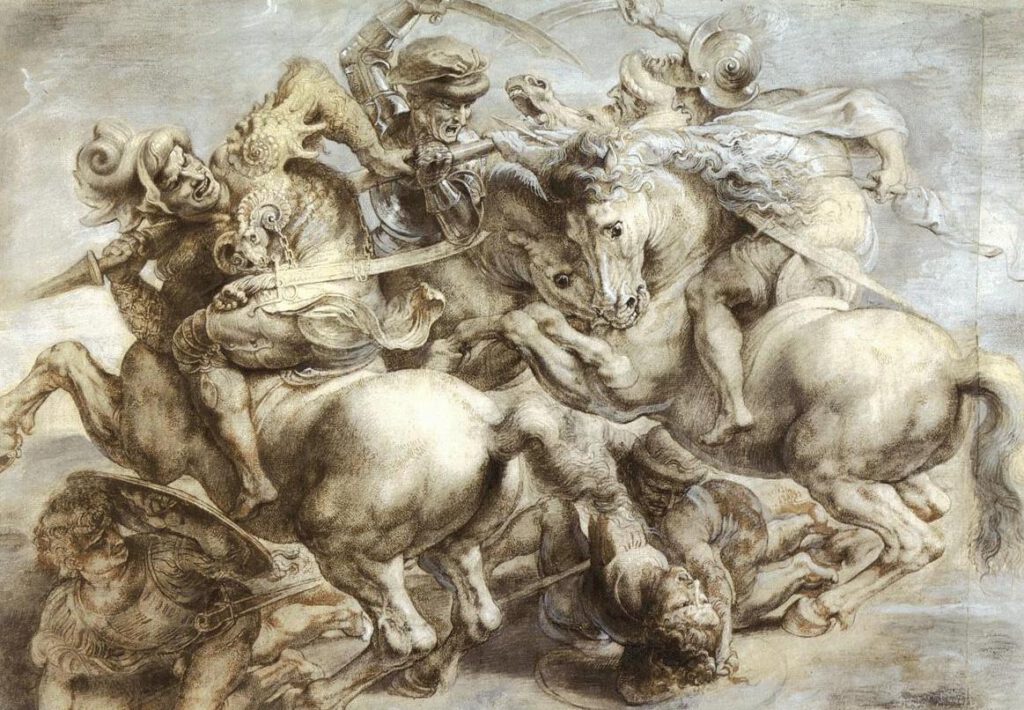Miklós Bánffy’s story of The Remarkable Mrs Anderson is centred on a fictitious work of art, a Head of Christ by Leonardo da Vinci, stolen from the Museum of Fine Arts in Budapest. No such work exists but the basic premise is not implausible. The Museum of Fine Arts is one of the finest galleries of its kind in the world and it does possess some works by Leonardo da Vinci.
To be exact, it possesses four. Three of them are drawings (not on permanent display because of their fragility) and the fourth is a small bronze.
The earliest work is a study of horses’ legs, executed in black chalk and thought to date from the early 1480s, when Leonardo was in Milan. The artist had gone there in 1482 or 1483 to offer his services to Ludovico Sforza, known as ‘Il Moro’. Ludovico commissioned a gigantic equestrian monument to Francesco Sforza, soldier of fortune and founder of the Sforza dynasty, who had ruled Milan from 1450–66. No finished monument ever materialised. A clay model was produced but it was destroyed by French troops when they claimed Milan and took Il Moro into captivity. In Vigevano, the town southwest of Milan where Il Moro was born, in the vast Castello Visconteo Sforzesco, the Leonardiana museum has a detailed section devoted to the planning of this monument. The Budapest study drawing of horses’ legs is thought to have been prepared during the planning of that monument, perhaps drawn from life from one of the steeds in the great Sforza stables which are still to be seen in the castle at Vigevano.

Budapest’s two other Leonardo drawings are studies of warriors’ heads, one in charcoal and the other in red chalk and both probably made when Leonardo was back in his native Florence, where the city governors had commissioned a mural for Palazzo Vecchio. Once again it was a commission whose subject matter harked back to past valour, this time victory over Milan at the battle of Anghiari, which was fought in 1440. And once again the work was never completed: Leonardo had been trying to formulate a new mural-painting technique, an experiment which ended in failure. What we know of the composition of the work comes from a drawing by Rubens, now in the Louvre, of its central section, possibly derived from Leonardo’s own cartoon. The two Budapest drawings, by Leonardo’s hand, are studies for the heads of some of the combatants, hoary and partially toothless old condottieri remorselessly slugging it out.


The fourth Budapest Leonardo is a small bronze of a rearing horse and its rider, naked but for his elaborate helmet. The whole ensemble stands just over 24cm high. It was bought by the Hungarian Neoclassical sculptor István Ferenczy while he was in Rome studying under Bertel Thorvaldsen. This would have been sometime between 1818 and 1824. Anything else about the provenance of the sculpture is unknown. In fact, the true identity of its sculptor is unknown. When it was first acquired by the Museum of Fine Arts, just before WWI, it was displayed as a Leonardo. Today scholars are more cautious. There were even suggestions that it was a 19th-century copy but those fears were laid to rest in 2009, following painstaking studies in Washington. The attribution to Leonardo remains, but the little bronze may in fact be the work of one of the master’s wide circle of imitators. The debate goes on and the little horse and rider now have their very own website devoted to their story.
